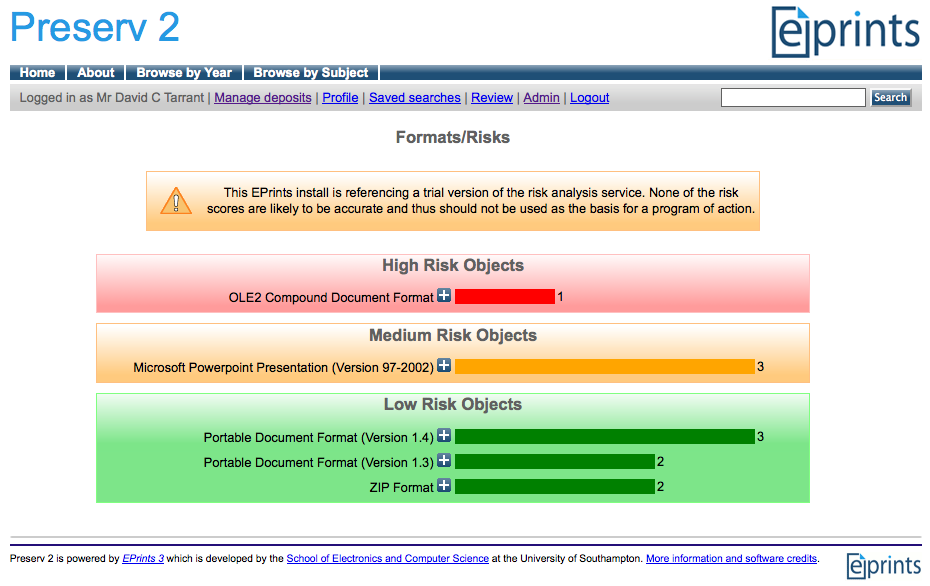

|
Latest...
|
|
Project Partners PRESERV 2 is funded by JISC within its capital programme in response to the September 06 call (Circular 04/06), Repositories and Preservation strand PRESERV was originally funded by JISC within the 4/04 programme Supporting Digital Preservation and Asset Management in Institutions, theme 3: Institutional repository infrastructure development MORE INFORMATION? EMAIL: Steve Hitchcock, Project Manager TEL: +44 (0)23 8059 3256 FAX: +44 (0)23 8059 2865 PRESERV Project, IAM (Intelligence, Agents, Multimedia) Group, Department of Electronics & Computer Science, University of Southampton, Highfield, Southampton SO17 1BJ, UK |
| Preservation Services |
|
Is the file at risk?Having classified the files, this information can be used to assess risks associated with the file type and version. As mentioned previously, one of the easiest checks is to ensure that the file conforms to that format specification and does not contain any errors which are likely to cause it to fail when being used in the future. Examples where this can be applied include:
Although file checks can be performed on individual files, this is likely to be unrealistic for archives ingesting huge amounts of content in a short time. In this case we need to look at the grouping the files to provide a risk analysis based on the features of each set of files. Grouping was initiated using DROID file identification. DROID not only classifies files by application, it also shows the format version. With this specific information, the functionality of the PRONOM registry can be used to add features that allow a risk score to be retrieved for each format type and version. The figure below shows the same EPrints classification screen as previously, except this time it also shows the risk score for each format. Using thresholds, which can be adjusted by the repository administrator, the file formats are grouped into traffic light-style categories that clearly show the user the risks related to all of their objects, including those where no risk has been found.  EPrints format classification screen showing risk categories |
| <--- Preservation - Analyse | 6/8 | Implementing a risk assessment service ---> |






